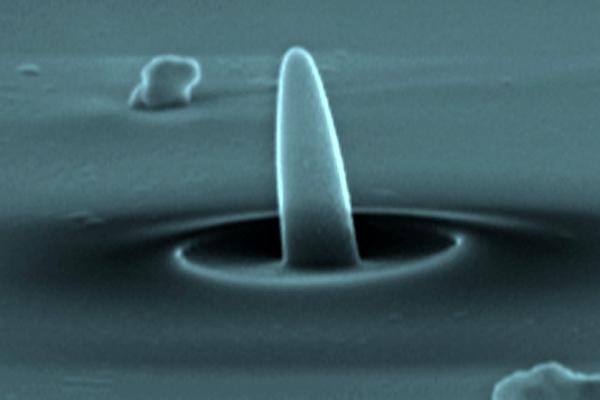
In summary:

- UTS scientists have unveiled new physics behind the nanofabrication technique known as electron beam induced deposition or EBID
- The research team has reported insights into the behaviour of molecules at surfaces leading to extraordinary improvements in speed and the quality of materials fabricated using the EBID technique
Techniques for the manipulation of matter at the nano scale are a step further ahead with the publication of new results from a UTS research group.
A team of physicists funded by FEI Company and the Australian Research Council have unveiled new physics behind the nanofabrication technique known as electron beam induced deposition (EBID), essentially 3D printing at the molecular level.
The UTS team has reported new insights into the behaviour of molecules at surfaces to achieve extraordinary improvements in speed and the quality of materials fabricated using the EBID technique.
Using the UTS FEI laboratory and an advanced research grade electron microscope the scientists have been able to explain the nature of chemical reactions on hot, solid surfaces and to "write" highly pure nanostructures.
The UTS experiments have led to the discovery that the EBID technique performs optimally under conditions previously dismissed as ineffective, due to gaps in prior understanding of the basic science behind EBID.
One of the researchers, Professor Milos Toth said, "Techniques for manipulation of matter at the nano scale critically underpin the development of future generation electronics, photonics and materials used in renewable energy technologies."
"Our findings help advance the techniques and build the machines used to advance nano scale science and technology."
"These discoveries are enabled by the cutting edge FEI equipment used by research staff and students at UTS," Professor Toth said.
Professor Toth is speaking in this week's UTS Science in Focus lecture, The future of science and technology at the nanoscale.
See more details on the research and the findings in the journal Physical Review Letters.

